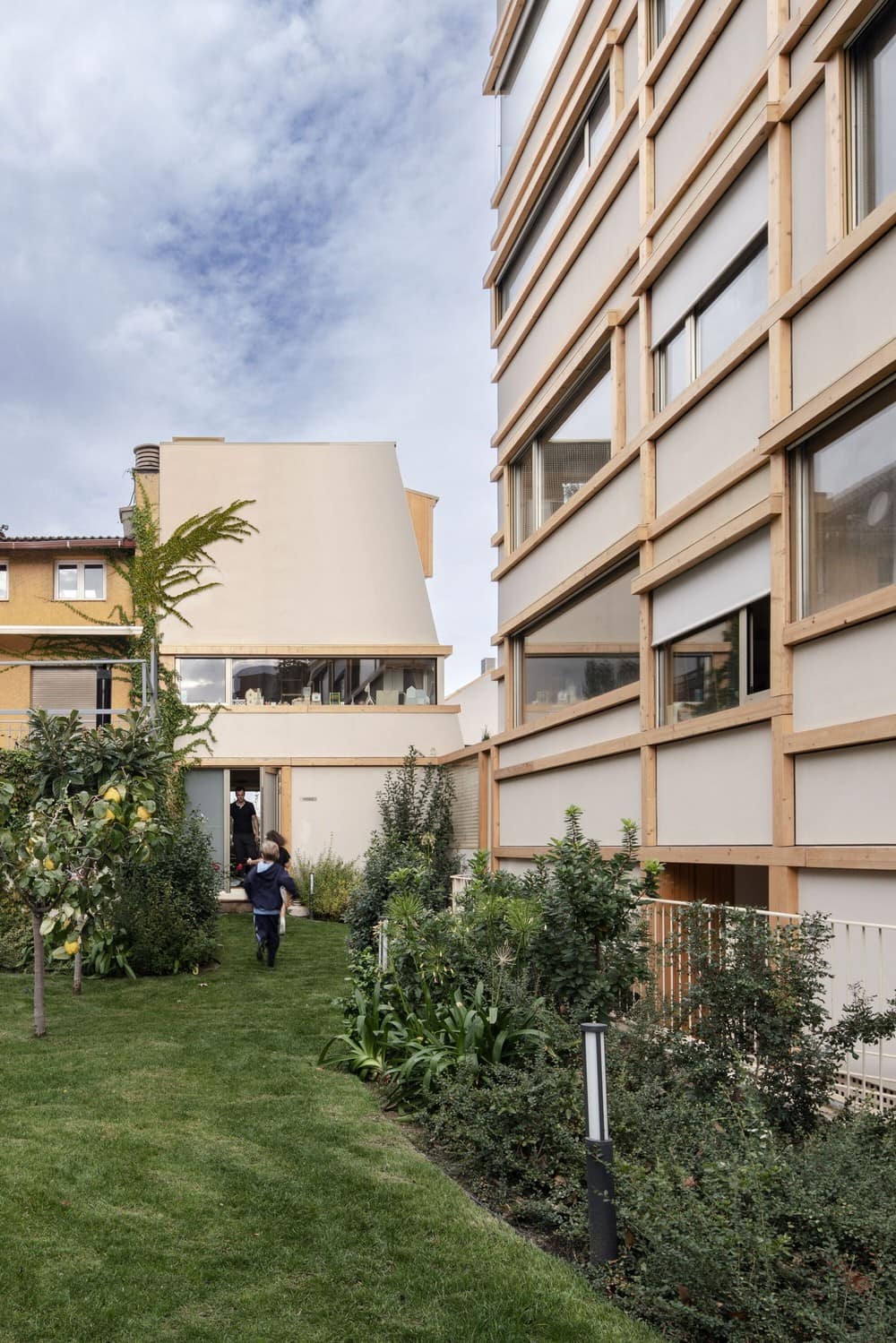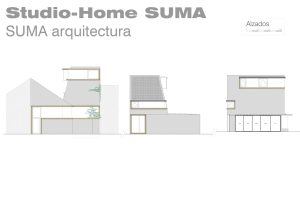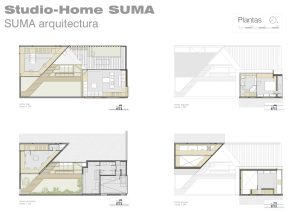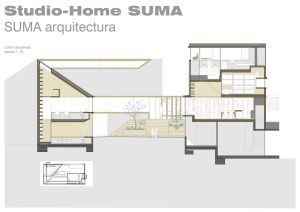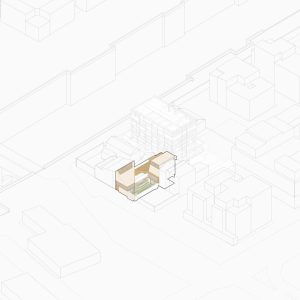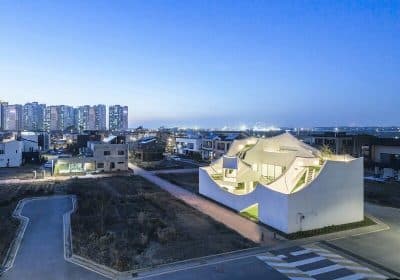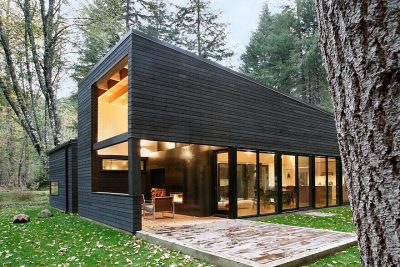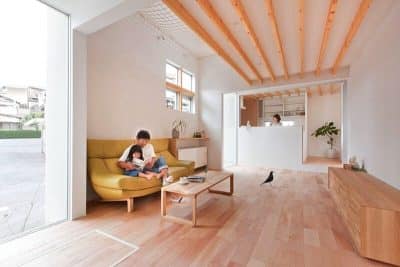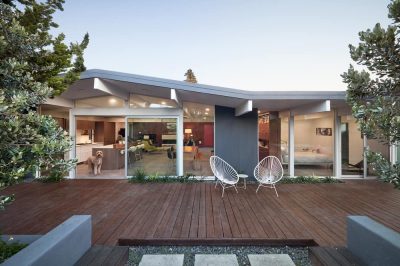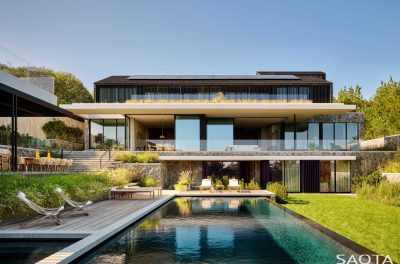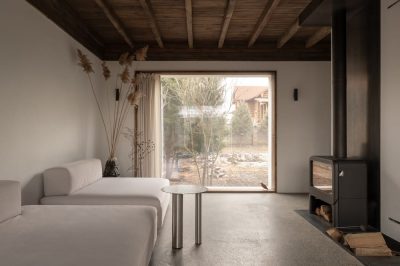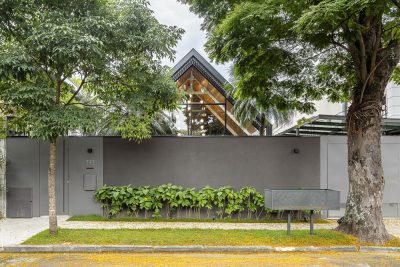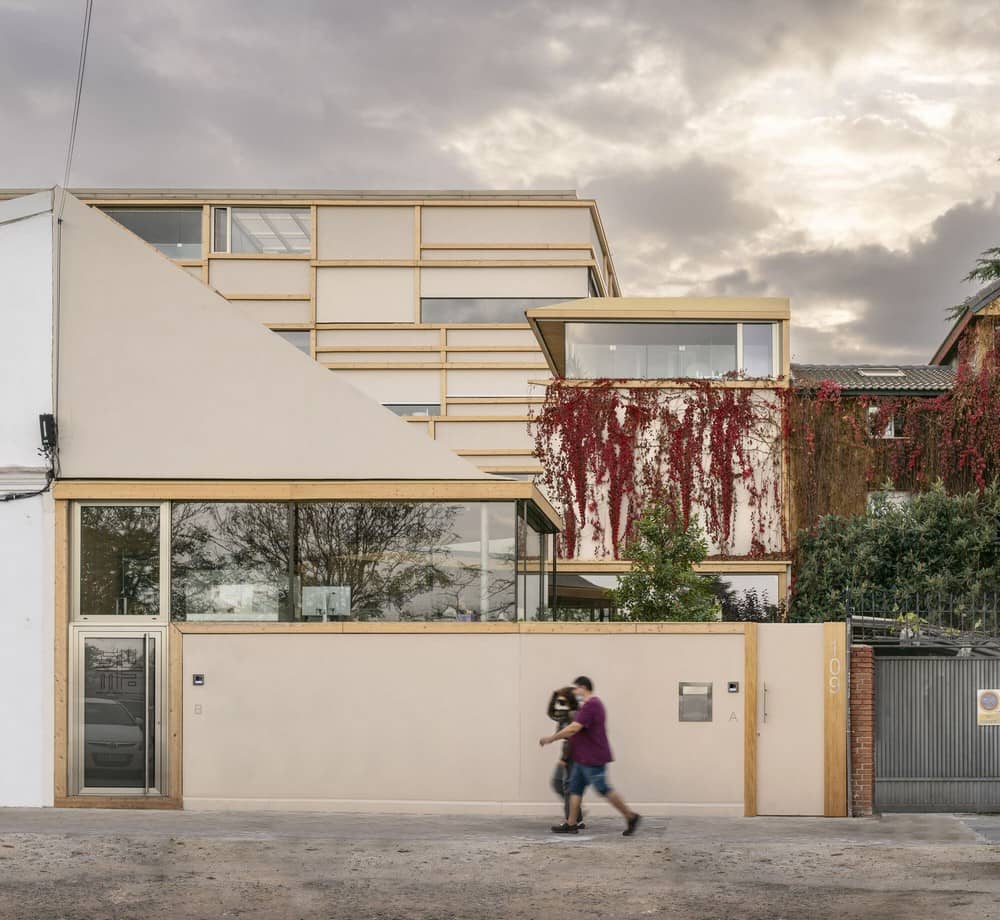
Project Name: Studio & Home SUMA
Architecture: SUMA Arquitectura
Author: Elena Orte, Guillermo Sevillano
Location: Madrid, Spain
Year: 2021
Photo Credits: Jesús Granada
Independent housing and studio within the Our-Shelves-Houses promotion, are highly conditioned by the context of the surrounding buildings and the remaining buildability (barely 115 m2). The project becomes an exercise in optimization and ingenuity to accommodate a program that was difficult to fit a priori.

The program is organized into two volumes attached to the existing median walls and connected by a pergola, embracing the interior garden and protecting it from the noise of the nearby highway. A large continuous gap runs through the ground floor, which is located at level +1.50 m. with the terrace also attached and elevated to gain views without losing privacy. It also introduces lighting to the semi-buried plant rooms.
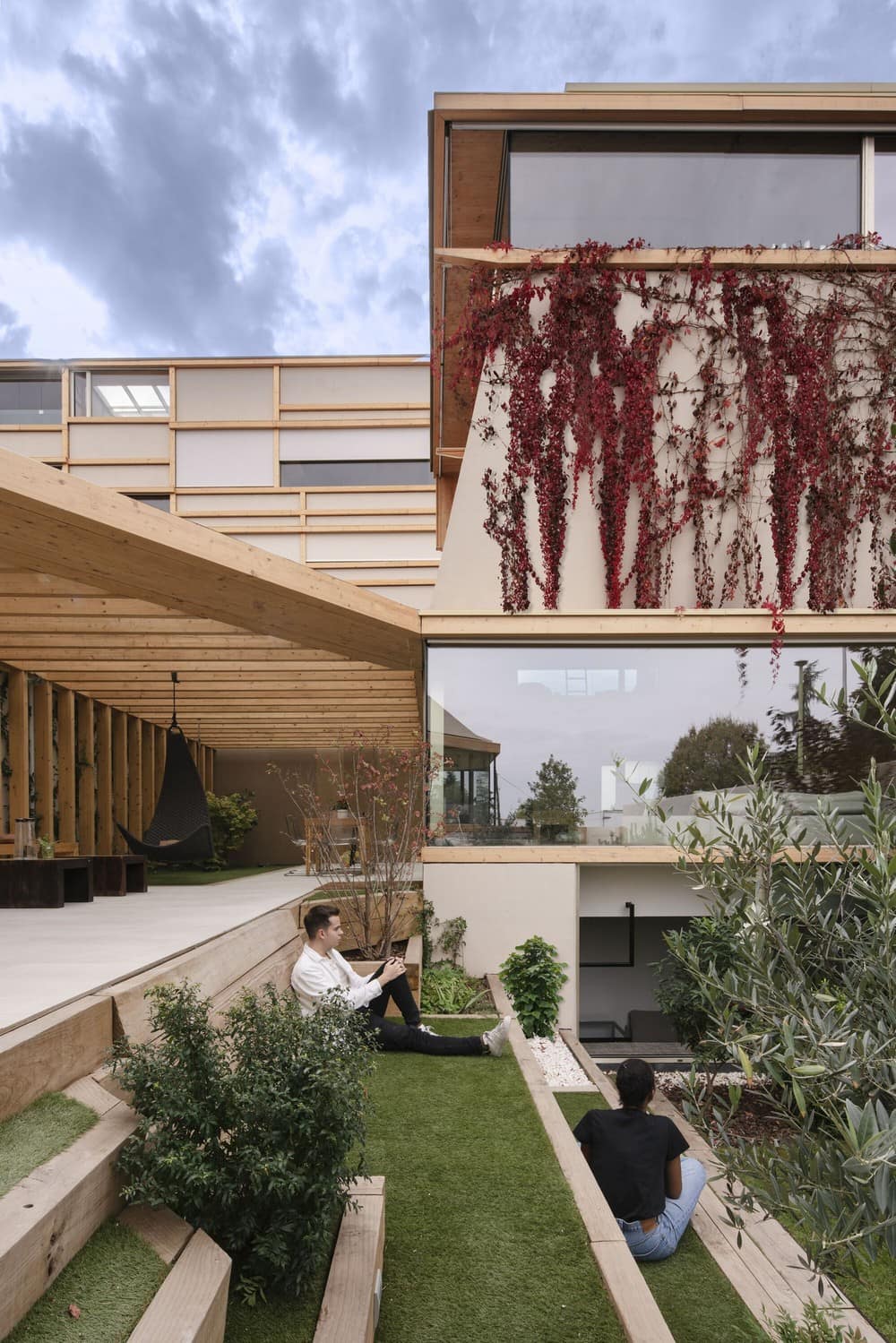
The two volumes have sloping facades and roofs, to be related to each other, respond to urban planning requirements, and adjust the demanding interior program. The section of each building tries to make the most of the scarcely available volume, projecting space in multiple visual directions, gaps, and light inputs that maximize spatial amplitude and chaining.
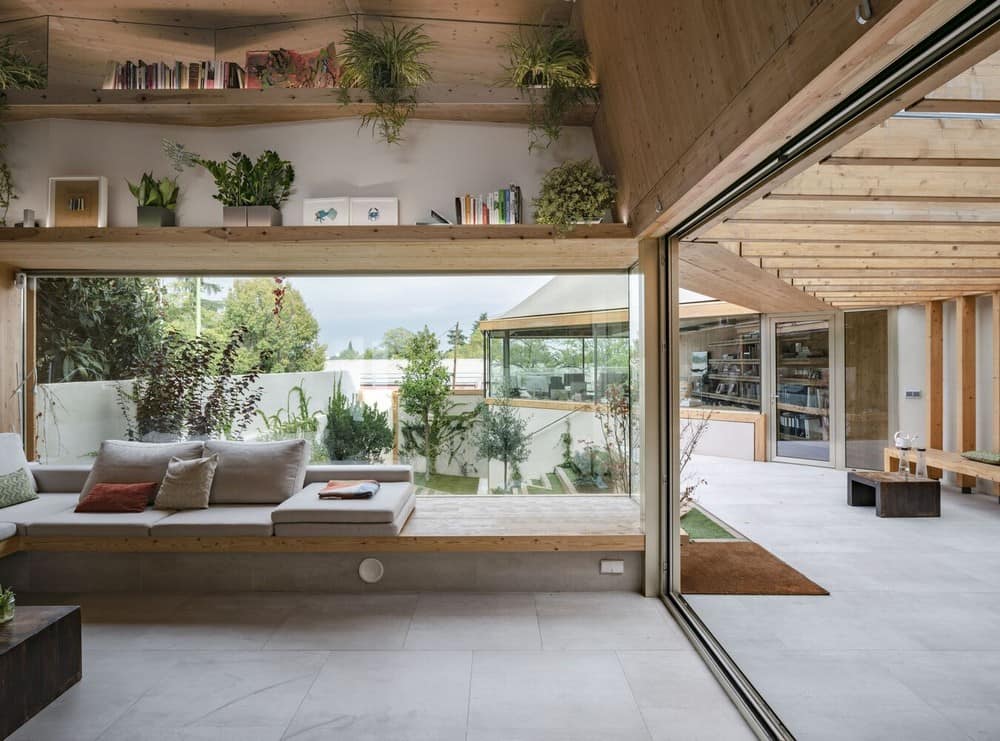
Thus, while the neighboring building is 3 stories, the house has 4 and multiple intermediate levels. The dilations of space in one room become the headboard, sofa, and support surfaces in another. The stairs, in turn, are used as distribution spaces to avoid the use of corridors and corridors. Two dilated corner gaps run through the upper floors of the house.
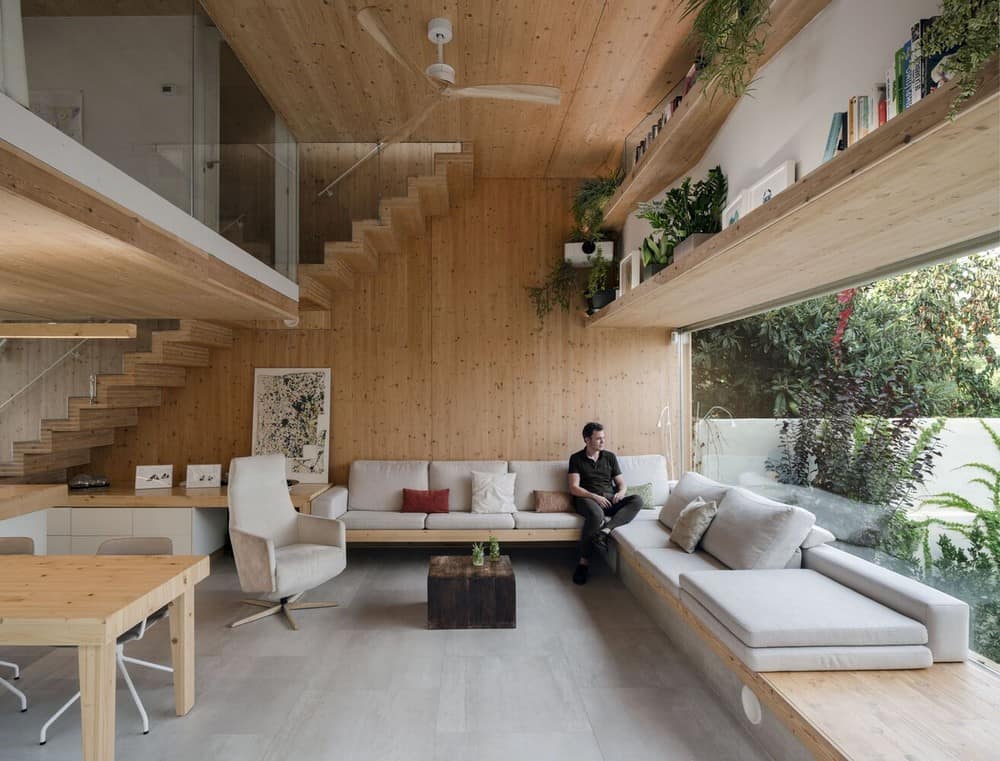
The structure is composed of a foundation and walls under reinforced concrete level and, above ground, walls and laminated red spruce wood slabs, with two median walls that rise at once with insulation and ducts for installations.
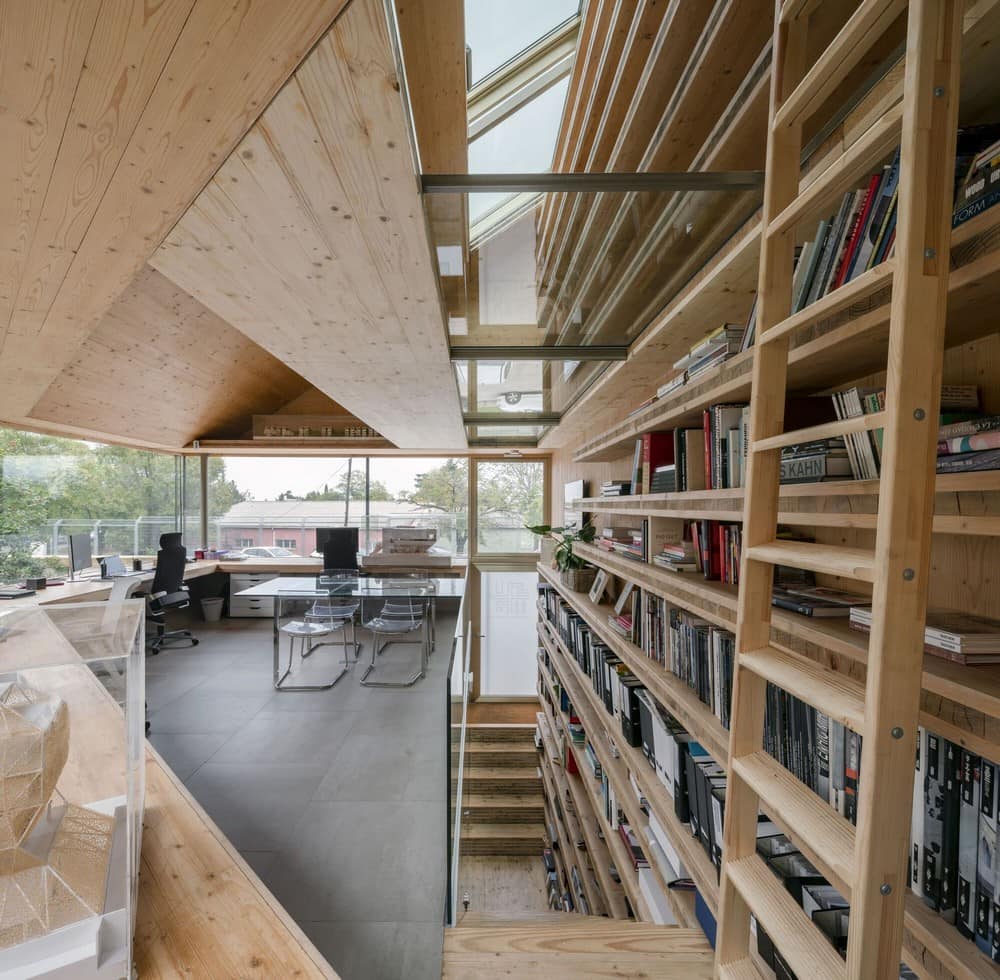
In the house, the stair and continuous corner window gaps are resolved by suspending the mezzanines from the slab of the upper floor. Some metal supports appear punctually merging with glass enclosures. The above-ground stairs are executed with 5-layer laminated wood pieces, connected to each other and embedded in the median walls.
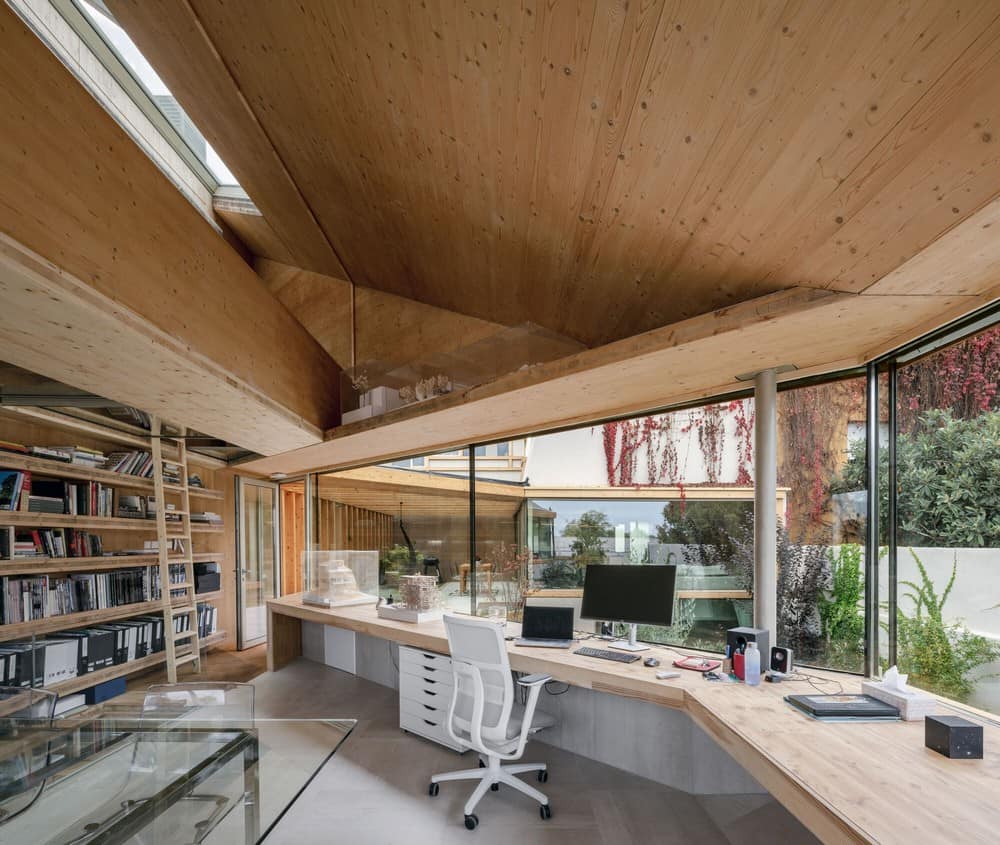
The envelope is resolved with a light closure of cement panels and treated coniferous wood covers. This achieves a Nordic-inspired architecture on the one hand, through the use of wood and a pragmatic and light-hungry domesticity; and Japanese resources, on the other hand, through the chaining of spaces and visual relationships.
